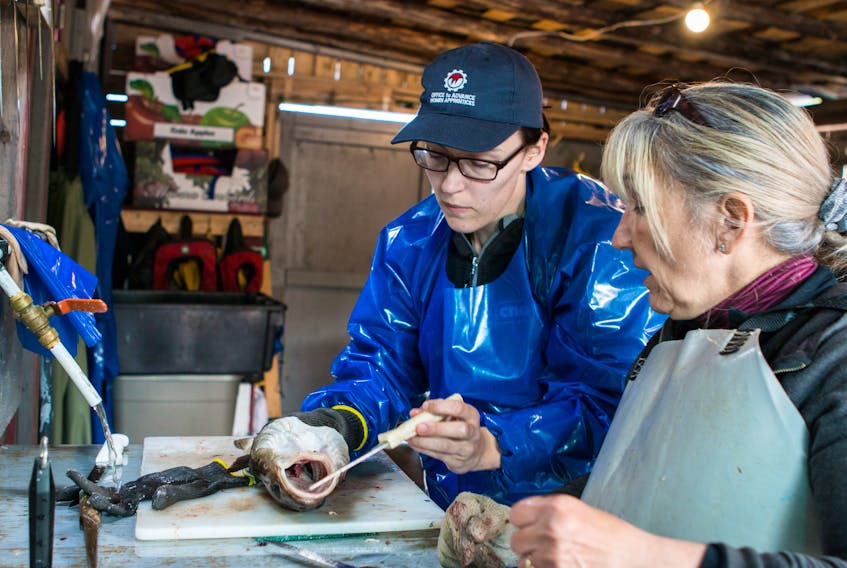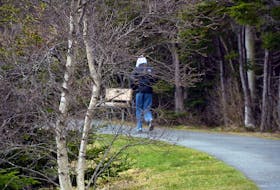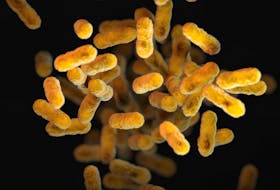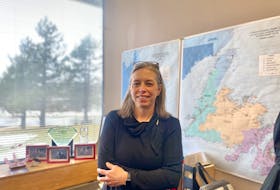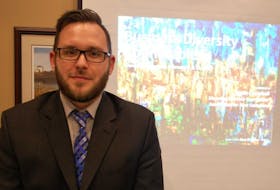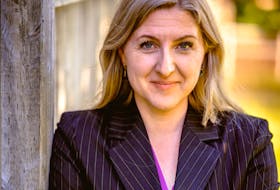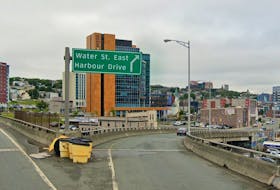On a commercial level, seafood by-products remaining after processing have a number of uses. They can be turned into fishmeal, fish oil, fertilizer or livestock feed, or be used in medicinal applications.
Seafood caught by recreational fish harvesters, however, generally isn’t used in the same way and results in a significant amount of wastage.
“Right now, with the type of processing method that’s used for codfish, mostly what’s removed is the fillet and the tongue. You still have the nape, cod sound, belly, cheeks, the skeleton which has meat still stuck to it, and the skin,” explains Kimberly Orren, co-founder and project manager of Island Rooms of Petty Harbour Fishing for Success.
“Those are the parts of the fish that are components of the almost 65 per cent waste of fish once the fillet and the tongue are removed.”
So, once bars in search of a Screech-In prop have been taken care of, what to do with the rest of the offal?
During last fall’s recreational food fishery, participants in Fishing for Success’s Girls Who Fish program were given the opportunity to learn how to utilize the waste coming off the docks after harvesters had removed the fillets and tongues.
“They learned how to cut those out of the fish and … the fishermen who didn’t remove the cheeks donated the fish, and Girls Who Fish removed the cheeks and then had a meal of fish for free for the residents at Ruby Manor,” Orren said.
Around the same time, Fishing for Success partnered with Choices for Youth to bring in members of its Mama Moments program, a community-based peer-to-peer program for young pregnant and parenting women, for a pilot program to learn how to separate meat from the skeletons.
“A couple of days later we all went out to Mallard Cottage and they taught the young women to make a fish stock from the fish frames they had carved out.”
Fishing for Success is also using the fish skin, when available, by drying them out for dog treats, and Orren says they’re also experimenting with making paint out of the leftover skin.
There’s also a potential for the skin to be used in art.
One of the Girls Who Fish participants was local artist and researcher Jane Walker, and she partnered with Scottish visual artist Vivian Ross-Smith on a project called Islandness.
Ross-Smith, instead of drying them to make smelly and savoury canine snacks, was making beautiful works of art.
“Our idea is that we’re not artists ourselves, but we’re teaching fishing skills with the hope that artists will use these skills in their tool kit to create something beautiful so that the story of fishing will always remain in our human story,” Orren said.
Fishing for Success is a social enterprise that is tackling the loss of traditional knowledge and culture head on by using experiential learning programs from its facility in Petty Harbour.
The problem is, they’re limited to when they can offer the programs, since they rely entirely on the cod landed during the province’s food fisheries, the three-week window from mid-July to early August, the last week of September and six other weekends.
“It’s very frustrating because we have a program called Youth Cod Fishery and right now we’re limited to providing that simply for a small number of urbanized youth in St. John’s and we can’t expand the programming because of that,” Orren says.
“We can’t develop or provide any kind of school programming because it just doesn’t fall in that school time, except that one week.”
While she feels support to impart this knowledge on youth is building, there’s been no movement on her requests to obtain a commercial licence from the Department of Fisheries and Oceans.
“We’re still petitioning, still working on that,” says Orren, who was the recipient of the YWCA Women of Distinction Award for mentorship and education on International Women’s Day, “and I’m hoping that the award will shine another light on the programs that we’re doing and how important they are, and how in the grand scheme of things the benefits greatly outweigh the cost of the amount of access we would need just fishing from Petty Harbour.”
It’s not strictly about encouraging more youth to consider a career as a fish harvester. It’s about getting people back to the ocean and thinking about how it’s vitally important to human life.
“If we don’t get kids down to the ocean and interested in it, how are they going to be aware of what kind of impact they could have?
“There’s also a lot of other careers besides fishing. There’s marine transportation, there’s oceanography, marine biology. There’s so much going on in the ocean, but we’ve got kids there first.”
kenn.oliver@thetelegram.com
Twitter: kennoliver79

